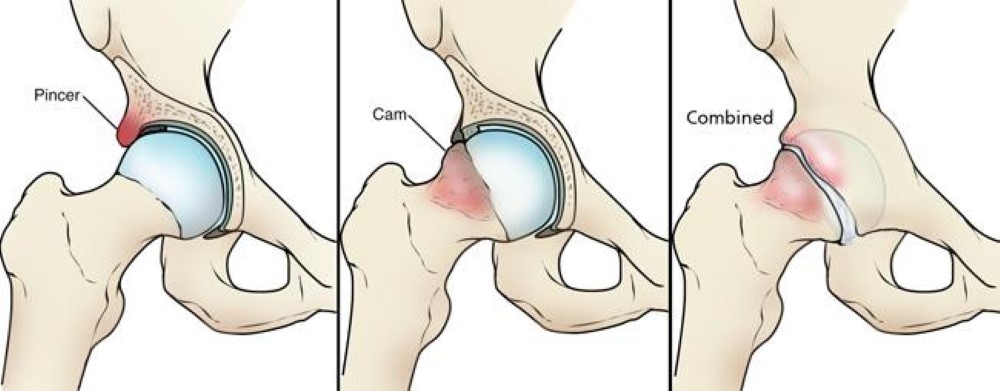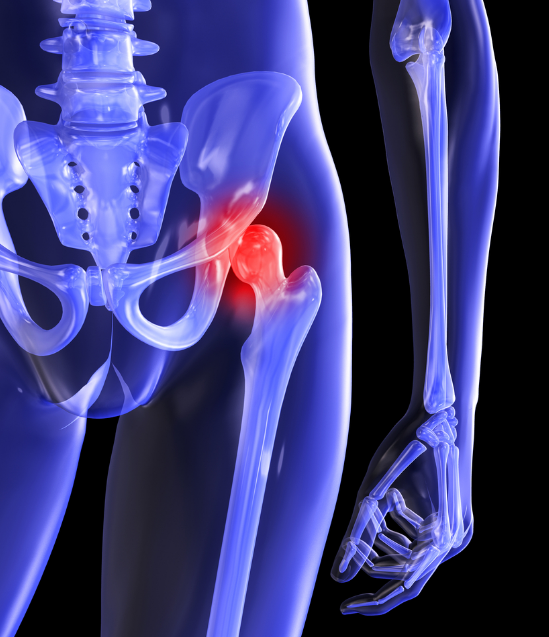By Jordan McInnis PT
Anatomy,
Femoral Acetabular Impingement is a condition caused when the proximal femur and acetabulum contact before the hips end range of motion. This causes bone morphology to the femur, acetabulum, or both. These lesions are known as cam, pincer, or combination morphologies. The labrum is a cartilage cup that surrounds the hip to help increase stability and ensure that the femur can move smoothly within the acetabulum.

Etiology
Many sports cause the athlete to complete the same motion over and over. When there is an FAI present this causes irritation to the joint and causes a bone lesion to begin. As the motion is continued the lesion becomes larger and larger. This leads to greater impingement and thus, a greater increase in morphology. As the lesion increases it can cause an increased risk in injuring the labrum. When repetitive impingement occurs it can lead to tears in the labrum.

Signs and Symptoms
Most people that have a FAI experience pain with movements that involve the hip passing 90 degrees of flexion and repeated internal rotation for example: squatting, ascending stairs, quickly changing directions while running.
For a labral tear most people report pain in the anterior portion of the hip radiating into the groin, stiffness in the hip after exercise, locking or the hip giving way when squatting or running.
Prevention
Now with many kids playing the same sport for 12 months of the year we are seeing an increase in FAI and hip related injuries due to the kids completing the same movements all the time. It is important that these athletes incorporate proper hip mobility routines and strengthening exercises into their warmup to prevent these long term ailments from occuring.

To book a physiotherapy appointment with Jordan, you can book here.
☎️ (902) 620-5182
📧 panthers@reactivehealth.com
📍550 University Ave, Charlottetown (Chi-Wan Young Sports Centre Entrance)

